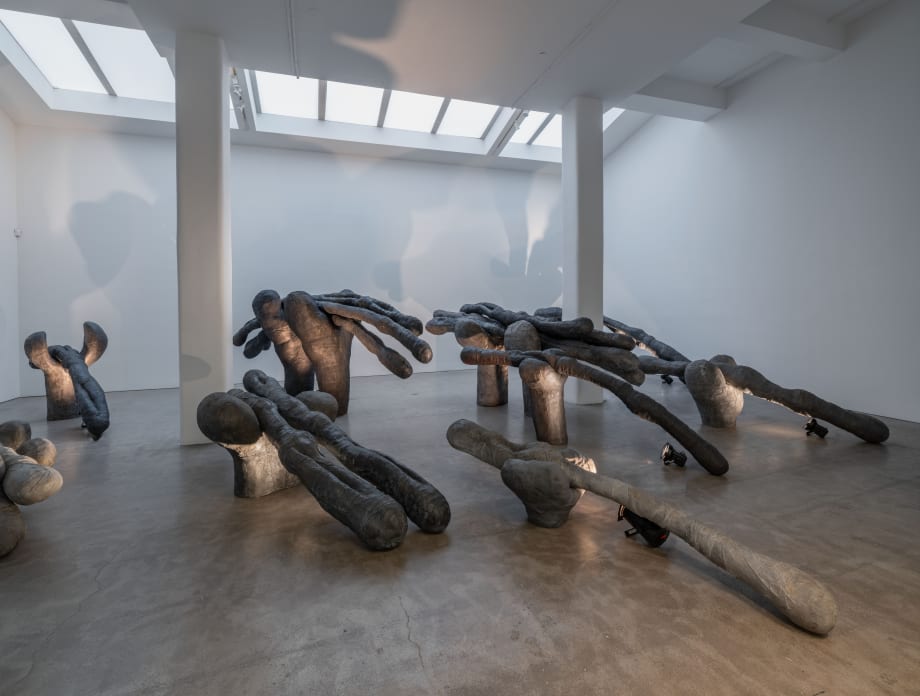ARTSEEN | Mary Ann Unger: Across the Bering Strait
The Brooklyn Rail
Coinciding with New York City’s spring art fairs, Berry Campbell Gallery is presenting a thorough and impressive mini-retrospective of Mary Ann Unger. Comprising twenty-five works that date from 1976 to 1998—the year of the artist’s untimely death from breast cancer—the show demonstrates Unger’s notable sculptural range. Untitled (1976), a biomorphic barbell of bonded iron, shows an artist unafraid of working relatively large in heavy materials; wall sculptures like the crimson clay Untitled (1997) betray the lighter touch of Unger’s air-borne sculptural lattices; a Giacometti-esque Blue Head (1997) unwinds any supposed prohibitions on figuration. Finally, a suite of early graphite drawings suggests a connection to the repetition and modularity of conceptualism, even if this is not the effect of Unger’s work overall. Art history feels very present, as does a knack for engineering. Ultimately, the work feels deeply human.
Most of what is on view is presented in four rooms that border the gallery’s nave-like central space. However, the exhibition’s undeniable showstopper, Across the Bering Strait (1992–94), is installed in a large back gallery of its own. Debuted at Jersey City’s Trans Hudson Gallery in 1994, this is the first time the work has been installed in its entirety in New York City. Across the Bering Strait is a large-scale sculpture made of thirty-three elements of welded steel covered by pigmented Hydrocal (a harder version of plaster) pressed into cheesecloth. These elements are constellated into ten individual groupings, all with one or two roughly Y-shaped posts that support a bundle of irregular rods. The rods are between ten and fourteen feet long and covered in a modulated rusty grey that recalls the color of slate. The surfaces are smooth but irregular, with scabby passages or wrinkles caused by the cheesecloth, like creases in elephant skin. Excepting one set toward the center of the gallery, at least one rod in each grouping touches the floor, like nine seedlings that all bend in unison toward the sun.
Since I saw it, I’ve become captivated by the way Across the Bering Strait’s sculptural elements push right up against the limits of language. The rods are at once bean pods, worms, mummified appendages, semi-flaccid phalluses, chromosomes, primitive tools, and prehistoric sea creatures. The posts are both hands and vertebrae. Each of these similes is both too specific and not descriptive enough. Yet despite its wide associative range, the work still retains a certain window of specificity: all of these things support and structure life, whether at the molecular, anthropological, or geographic level. It is rare and noteworthy for abstract art to offer the viewer such interpretative agency while still maintaining a firm grasp on meaning’s thematic flow. In Unger’s hands, this is not iron-fisted authorship, nor is it “anything goes.” It is an acknowledgement that life’s ebbs and flows, across time and place, are often structural (not just personal, as many accounts of Unger’s art suggest).
— Elizabeth Buhe, The Brooklyn Rail
May 14, 2025


